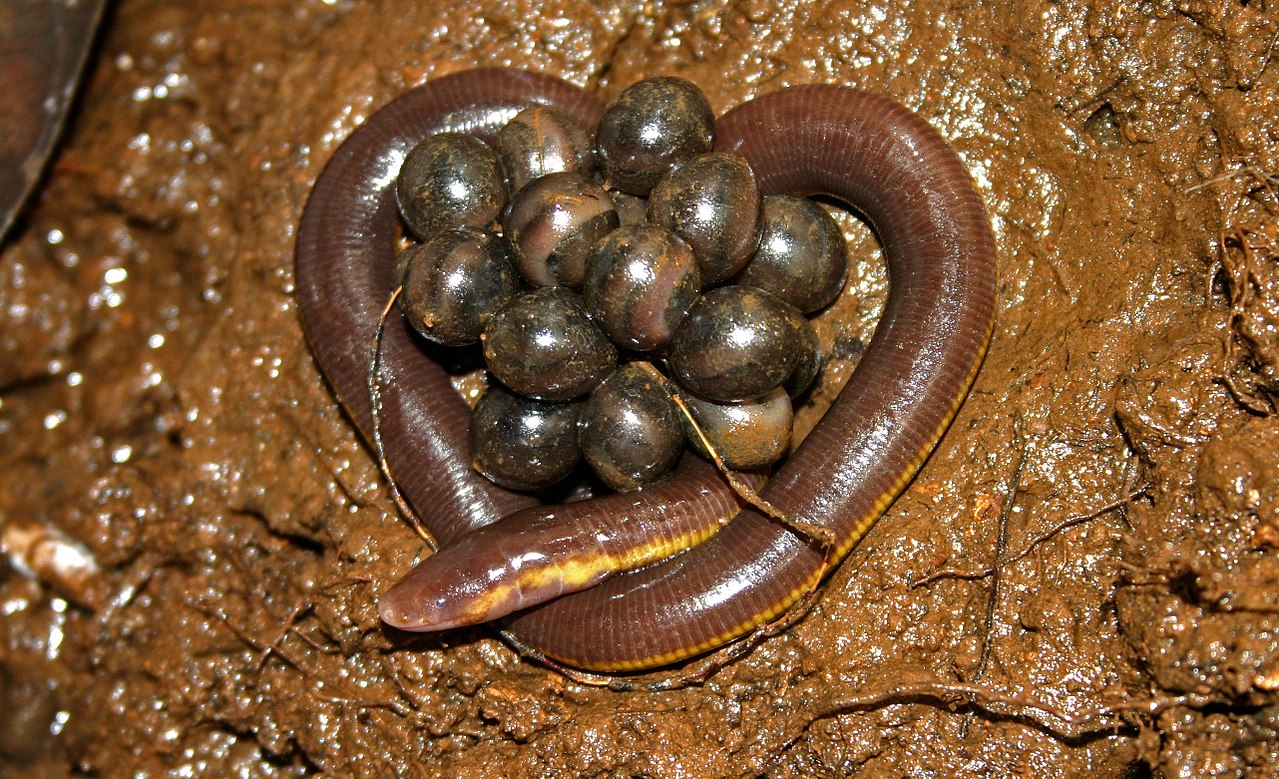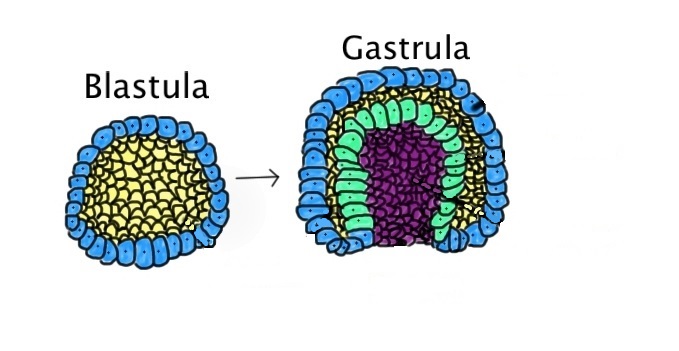Blog

#bioPGH Blog: Amphibian Development, Part Three – Caecilians
 A resource of Biophilia: Pittsburgh, #bioPGH is a weekly blog and social media series that aims to encourage both children and adults to reconnect with nature and enjoy what each of our distinctive seasons has to offer.
A resource of Biophilia: Pittsburgh, #bioPGH is a weekly blog and social media series that aims to encourage both children and adults to reconnect with nature and enjoy what each of our distinctive seasons has to offer.
To wrap up our three-part series on amphibian development, we’re going to deviate slightly from the normal goal of this blog and introduce a group of animals that are not actually found in Pennsylvania. The taxonomic class Amphibia, is made up of three orders of amphibians: Anura, the grouping of frogs and toads; Caudata, the grouping of salamanders; and one last order of Gymnophiona, the caecilians. We may not have these animals in our state, but the story of amphibian development just wouldn’t be right without them, so let’s explore!
First of all, what is a caecilian? At first glance, they are…curious-looking creatures. Caecilians are elongated, legless animals that look something like a cross between a snake and an earthworm, and different species vary in length from roughly three inches to five feet long. Like other amphibians, they have smooth, wet skin rather than scales (though a few have tiny, scale-like coverings), but in an adaptation to life largely lived below the ground, most caecilians are nearly or completely blind. Some have tiny eyes, while others have eyes covered with skin and bone. Instead of vision, many species have little sensory tentacles at the end of their snout to help navigate either in water or other surroundings. As I mentioned, we don’t have these in Pennsylvania, but caecilians can be found in South and Central America, Asia, and Africa.
Now that we are a bit more familiar with this group of animals, what is their development like? As we saw with frogs and salamanders, there is quite a bit of variety! While some emerge from eggs, others are born live; and of those who emerge from eggs, some look like little adults straight out of the egg and others spend time as larvae. Some species of caecilians are invested in different levels of parental care while others are not.

Photo credit: Wikimedia user Davidvraju, CC-BY-SA-4.0
To put us back on familiar ground, caecilians all begin with that early balls of cells, the blastula, that we have discussed the past few weeks; and, again, they progress past the blastula stage into the gastrula stage where we see those three layers of cells that will go on to become different regions of the body.

Photo credit: Wikimedia user Aveav, cc-by-sa3.0
Once the little embryo has a visible tail bud, we can start seeing distinctive differences from other amphibians. Caecilians actually have quite a short tail and a long body, and you can see this in the progression of the embryo’s development in Figure 2 of this paper.
Note that this example species develops in an egg and emerges as a larva. That is why they have the frilly external gills that vaguely resemble a wild hairdo. This image also gives a clear view of the embryo’s yolk — the nutritional supply that feeds the little growing caecilian. In the images, it’s the round “glowing” portion that gets smaller as the embryo grows. The caecilians who emerge from eggs as larva will have to undergo metamorphosis to reach their adult stage. Metamorphosis for them will include losing the external gills and completing the development of their internal organs, especially lungs (except for the lungless caecilian who respire through their skin as adults).
Well, this wraps up our three-week series of looking at amphibian development. I hope you enjoyed exploring the diversity of our slippery friends, and hope you’re inspired for deeper dive learning!
Connecting the Outdoors Tip: We may not have caecilians in PA, but we have plenty of frogs, toads, and salamanders! Enjoy our own local biodiversity, and spend some safe, social-distancing time outdoors!
Continue the Conversation: Share your nature discoveries with our community by posting to Twitter and Instagram with hashtag #bioPGH, and R.S.V.P. to attend our next Biophilia: Pittsburgh meeting.
Resources
National Geographic: Caecilians
Georgia Tech - Amphibian Development
Smithsonian Zoo: Wiggly and Wonderful Caecilians
Photo Credits: Cover, Wikimedia user G. Bhatta, CC-4.0; Caecilian guarding eggs, Wikimedia user Davidvraju, CC-BY-SA-4.0; blastula/gastrula, Wikimedia user Aveav, cc-by-sa3.0; Header, Pexels, public domain

